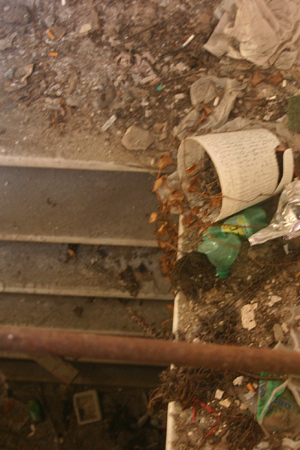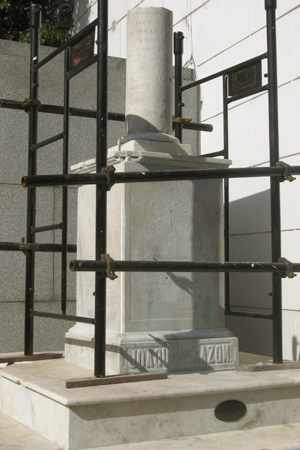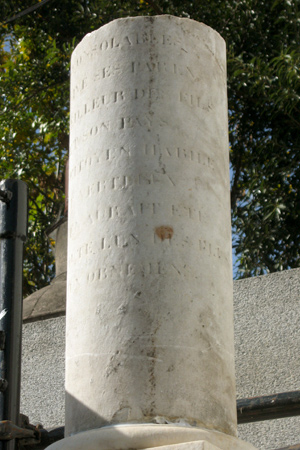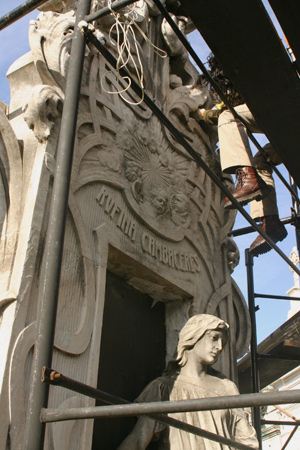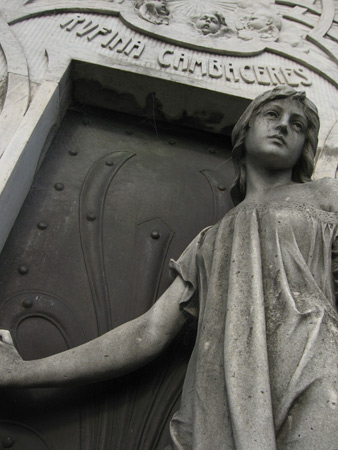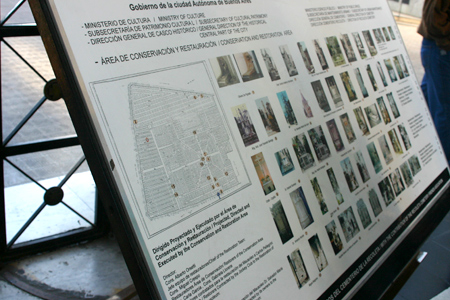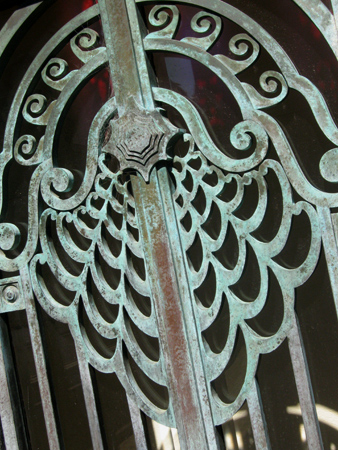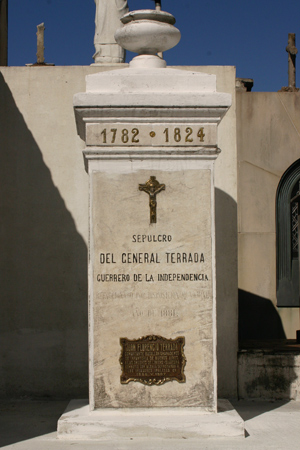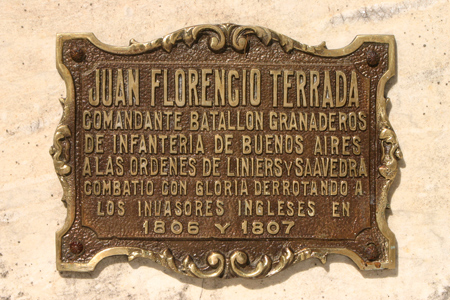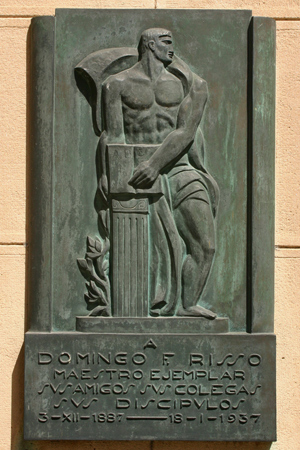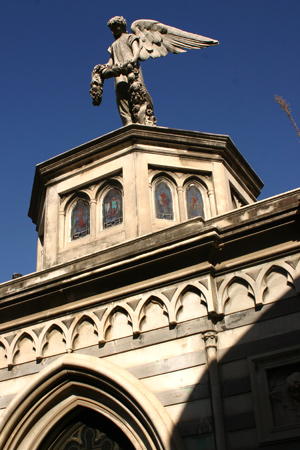
Similar to Victorino de la Plaza, the former family vault of President Miguel Juárez Celman sits vacant & forgotten… an odd fate since Celman incited one of the most important events in Argentine history, the Revolution of 1890.
Juárez Celman was born & raised in Córdoba where he studied law. Belonging to an aristocratic family, politics was a natural career path. Moving up in provincial then national government, Juárez Celman succeeded Carlos Tejedor as governor of Buenos Aires in 1880. Surviving Tejedor’s insurrection, Juárez Celman later founded the upper-class political party, Partido Autonomista Nacional (PAN). An alliance with President Roca earned him trust & political capital… so much that Juárez Celman was elected to succeed Roca.
After becoming President, Juárez Celman began to distance himself from Roca & preferred to do things his own way. Concentrating power in his own hands, the public referred to the term of Juárez Celman as a unicato… a one-man rule. After three years in office & with inflation out of control, diverse groups expressed their discontent with Juárez Celman. Upper class families, members of the clergy, university leaders, senators & the emerging middle class joined forces to form the Unión Cívica. Their main goal was to defeat the PAN in upcoming elections. But at the same time, preparations were being made for a coup d’etat.
Leading the Unión Cívica, Leandro Alem conspired with an influential general, Manuel Campos (brother of Luis María Campos). Planned for July 21st, the revolution was aborted by the arrest of key figures… someone had leaked information about the surprise attack. General Campos was taken under custody & while in prison received a visit by none other former President Roca. More sneaky plans were underway.
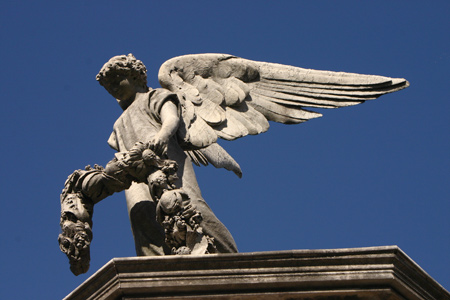
From jail, Campos sent word to Alem to go ahead with their plans & fighting broke out early on July 26, 1890. Juárez Celman’s government forces used Retiro as their base of operations while Alem’s forces were concentrated in Plaza Lavalle, now home of the Supreme Court. Battles took place in the heart of Buenos Aires as civilians took up arms in the attempt to oust Juárez Celman. As the fighting continued for the next few days, General Campos made obvious mistakes in command & gave the government ample time to recover & fight back. Alem noted these irregularities at the time but given the difficult situation, felt he couldn’t argue with Campos. Fighting ended four days later with a truce. While the revolution was not successful in overthrowing the government, the political landscape quickly changed afterwards.
Exactly as conspired, Juárez Celman lost all support & resigned, handing the government to Vice President Carlos Pellegrini. Even though there is no historical record of conversations between General Campos & ex-President Roca, it’s taken for fact that Campos made military mistakes on purpose. He threw the revolution so Roca & his allies could remain in power. All subplots aside, strong civilian support of the attempted revolution marked the beginning of civil society in Argentina & the birth of a radical political party.
There’s not much left to call attention to the Juárez Celman vault. Windows are usually open & the interior is full of frescos, damaged by years of neglect. Exterior plaques which identified the occupants sit on the floor among the rest of the debris. Tomás Juárez Celman is on the left & Miguel hides on the right:
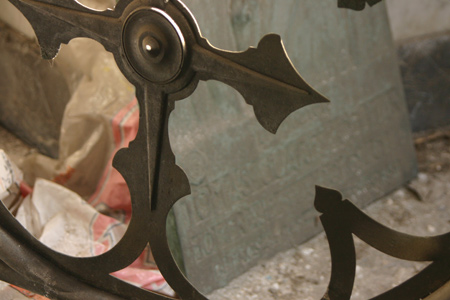
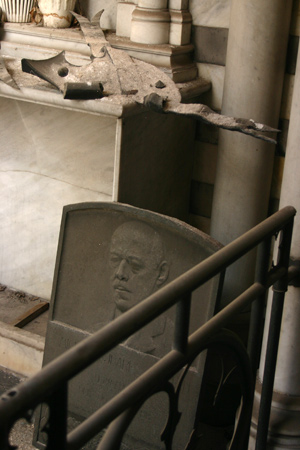
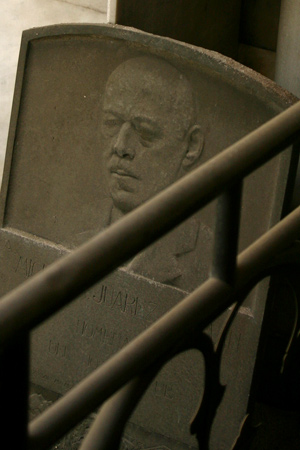
Although not the best photo (just sticking in the camera & hoping for the best), it’s evident that all caskets have been moved to another location & one less President rests in peace in Recoleta. Since Juárez Celman was from Córdoba, his family likely returned him there:
